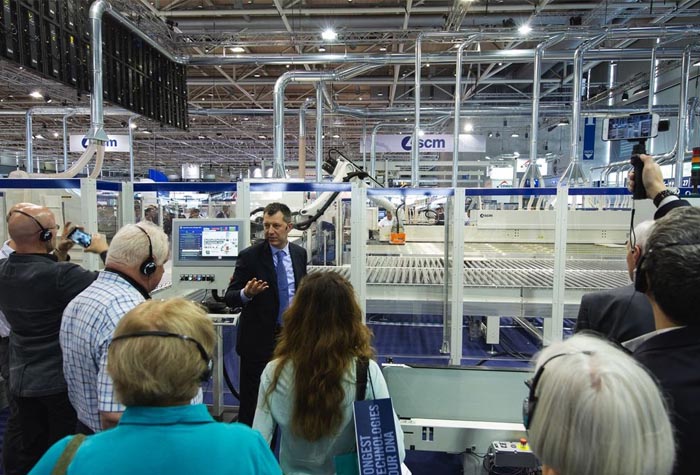GERMANY – Inspired by a record €600 million turnover in 2016, Scm’s presence at Ligna 2017 focused on innovation, new software, new technological solutions and a completely automated cell for the production of customized furniture.


In an impressive 4000 m2 stand at Ligna 2017, Scm Group presented over sixty technological solutions of its various ranges, designed to meet the demands of any type of company, from small woodworking workshops to large multinational companies. Among them the new work centers Morbidelli M100 and M200, the edgebanding work center Morbidelli P200, which can resolve the increasingly common problems with non-standard and shaped panels and the edgebanders with controlled axes, that cancel set-up times and ensure a high level of flexibility. Many new developments were also offered in the machines for small woodworking workshops, such as the double tilting circular saw Minimax SI X and the edgebander Minimax me40.
Particular attention in Hannover was given to the “Cell Lean 4.0”, which is a concrete application of the concepts of “Industria 4.0” and “mass customization”. The aim of the cell is to meet the individual needs of the client, whilst maintaining the advantages of the industrial production. The whole system is completely automated, managed by the Maestro Watch software, supported by an anthropomorphic robot fitted with a piece recognition viewer and managed by a single, not necessarily expert, operator. The “Cell Lean 4.0” is extremely flexible and able to produce a wide variety of pieces, from the production of a large number of panels ready to be assembled to “batch one”. The cell uses standard, absolutely reliable, high performing, easy to use and configure machines. The system operates automatically from the moment the order is launched and is open to every operating system. The cell is therefore able to automatically manage with a single operator, all the machining phases, starting from the standard panel to the assembly of the furniture. During Ligna 2017 the “Cell Lean 4.0” was used to produce libraries that will be installed in the recently rebuilt schools in Central Italy, destroyed in the 2016 summer and autumn earthquakes.


0 Comments